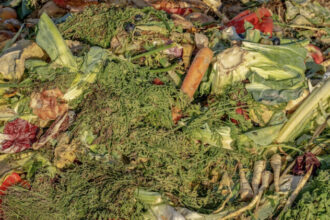As the Canadian summer unfolds in a tapestry of vibrant celebrations across provinces, our nation’s iconic fairs represent far more than nostalgic traditions—they stand as powerful economic engines driving local economies and preserving cultural heritage. From the Calgary Stampede’s thundering rodeos to the CNE’s lakeside attractions, these seasonal gatherings have evolved into sophisticated commercial ecosystems with far-reaching financial implications.
An analysis of recent economic data reveals the Calgary Stampede alone generated over $540 million in economic activity for Alberta in 2023, supporting approximately 3,500 jobs during its 10-day run. “These aren’t just community gatherings anymore—they’re sophisticated business operations with significant economic multiplier effects,” explains Dr. Marian Thompson, economist at the University of Toronto’s Rotman School of Management.
The Pacific National Exhibition in Vancouver similarly contributes an estimated $200 million annually to British Columbia’s economy, while Toronto’s Canadian National Exhibition injects approximately $180 million into the local economy each summer, according to municipal economic impact studies published earlier this year.
Beyond these headline figures lies a complex web of economic activity. Agricultural exhibitors at rural fairs report that sales connections made during summer exhibitions frequently sustain their businesses throughout the year. “Our participation at three provincial fairs last summer directly led to distribution deals worth over $120,000,” notes Jonathan McPherson, a small-scale organic producer from Manitoba.
For Canada’s tourism sector, these fairs serve as powerful destination marketing tools. Tourism Canada estimates that approximately 15% of summer fair attendees travel from outside their immediate region, generating substantial revenue for hotels, restaurants, and transportation services. The K-Days exhibition in Edmonton, for instance, draws visitors from across western provinces, with hotel occupancy rates typically rising 22% during the 10-day event.
The digital transformation of these traditional gatherings has further amplified their economic footprint. The integration of e-commerce platforms, mobile ticketing, and social media marketing has extended the commercial reach of these events far beyond fairgrounds. The Calgary Stampede’s online merchandise sales grew by 35% in 2023 compared to pre-pandemic levels, while virtual programming elements introduced during COVID-19 have been retained as revenue streams.
Yet challenges persist amid these economic success stories. Rising operational costs and climate concerns have forced fair organizers to innovate. The Western Fair in London, Ontario recently invested $2.8 million in energy-efficient infrastructure, a move that reduced operational costs by 18% while addressing environmental concerns.
For small towns like Drumheller, Alberta, and Stratford, Ontario, summer fairs represent a critical economic lifeline. “Our summer exhibition generates nearly 40% of our annual tourism revenue in just nine days,” explains Stratford Tourism Director Caroline Webster. “The economic ripple effect extends to practically every business in our downtown core.”
Perhaps most significantly, these fairs serve as incubators for small businesses. The “Makers Market” concept has become increasingly prevalent, with handcrafted goods vendors reporting that fair participation often represents their most profitable sales period of the year. A survey of 200 artisanal vendors at five major Canadian fairs indicated that 67% credited these events with providing their initial customer base.
Cultural economists also note the intangible economic benefits generated through the preservation of heritage skills showcased at these events. “When we consider the economic value of cultural transmission—passing agricultural knowledge from one generation to the next—these fairs provide an economic service that’s difficult to quantify but impossible to replace,” observes Dr. Hardeep Singh of the Canadian Cultural Economics Institute.
As summer fairs continue evolving in the face of changing consumer expectations and economic pressures, one question remains particularly relevant for policymakers and community leaders: How can we continue balancing the commercial growth of these iconic events while preserving the authentic cultural traditions that make them uniquely Canadian in the first place?

























